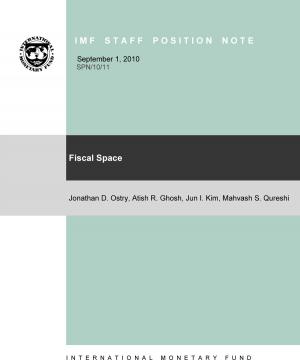Public-Private Partnerships, Government Guarantees, and Fiscal Risk
Business & Finance, Economics, International Economics, Macroeconomics| Author: | M. Mr. Cangiano, Barry Anderson, M. Mr. Alier, Murray Petrie, Richard Mr. Hemming | ISBN: | 9781451988550 |
| Publisher: | INTERNATIONAL MONETARY FUND | Publication: | April 28, 2006 |
| Imprint: | INTERNATIONAL MONETARY FUND | Language: | English |
| Author: | M. Mr. Cangiano, Barry Anderson, M. Mr. Alier, Murray Petrie, Richard Mr. Hemming |
| ISBN: | 9781451988550 |
| Publisher: | INTERNATIONAL MONETARY FUND |
| Publication: | April 28, 2006 |
| Imprint: | INTERNATIONAL MONETARY FUND |
| Language: | English |
Public-private partnerships (PPPs) refer to arrangements under which the private sector supplies infrastructure assets and infrastructure-based services that traditionally have been provided by the government. PPPs are used for a wide range of economic and social infrastructure projects, but they are used mainly to build and operate roads, bridges and tunnels, light rail networks, airports and air traffic control systems, prisons, water and sanitation plants, hospitals, schools, and public buildings. PPPs offer benefits similar to those offered by privatization, which is the sale of government-owned enterprises or assets. By the late 1990s, when privatization was losing much of its earlier momentum, PPPs began to be widely seen as a means of obtaining private sector capital and management expertise for infrastructure investment. After a modest start, a wave of PPPs is now beginning to sweep the world. This Special Issue paper provides an overview of some of the issues raised by PPPs, with a particular focus on their fiscal consequences. It also looks at government guarantees, which are used fairly widely to shield the private sector from risk and are a common feature of PPPs. And it examines the consequences of PPPs and guarantees for debt sustainability. The paper concludes with a list of measures that can maximize the benefits and minimize the fiscal risks associated with the use of PPPs. Various appendices augment the discussion by examining country experiences with PPPs, summarizing the statistical reporting framework used to discuss fiscal accounting and reporting, explaining accounting for risk transfer, examining how guarantees are modeled and estimated in Chile, and summarizing international accounting and reporting standards for contingent liabilities.
Public-private partnerships (PPPs) refer to arrangements under which the private sector supplies infrastructure assets and infrastructure-based services that traditionally have been provided by the government. PPPs are used for a wide range of economic and social infrastructure projects, but they are used mainly to build and operate roads, bridges and tunnels, light rail networks, airports and air traffic control systems, prisons, water and sanitation plants, hospitals, schools, and public buildings. PPPs offer benefits similar to those offered by privatization, which is the sale of government-owned enterprises or assets. By the late 1990s, when privatization was losing much of its earlier momentum, PPPs began to be widely seen as a means of obtaining private sector capital and management expertise for infrastructure investment. After a modest start, a wave of PPPs is now beginning to sweep the world. This Special Issue paper provides an overview of some of the issues raised by PPPs, with a particular focus on their fiscal consequences. It also looks at government guarantees, which are used fairly widely to shield the private sector from risk and are a common feature of PPPs. And it examines the consequences of PPPs and guarantees for debt sustainability. The paper concludes with a list of measures that can maximize the benefits and minimize the fiscal risks associated with the use of PPPs. Various appendices augment the discussion by examining country experiences with PPPs, summarizing the statistical reporting framework used to discuss fiscal accounting and reporting, explaining accounting for risk transfer, examining how guarantees are modeled and estimated in Chile, and summarizing international accounting and reporting standards for contingent liabilities.















